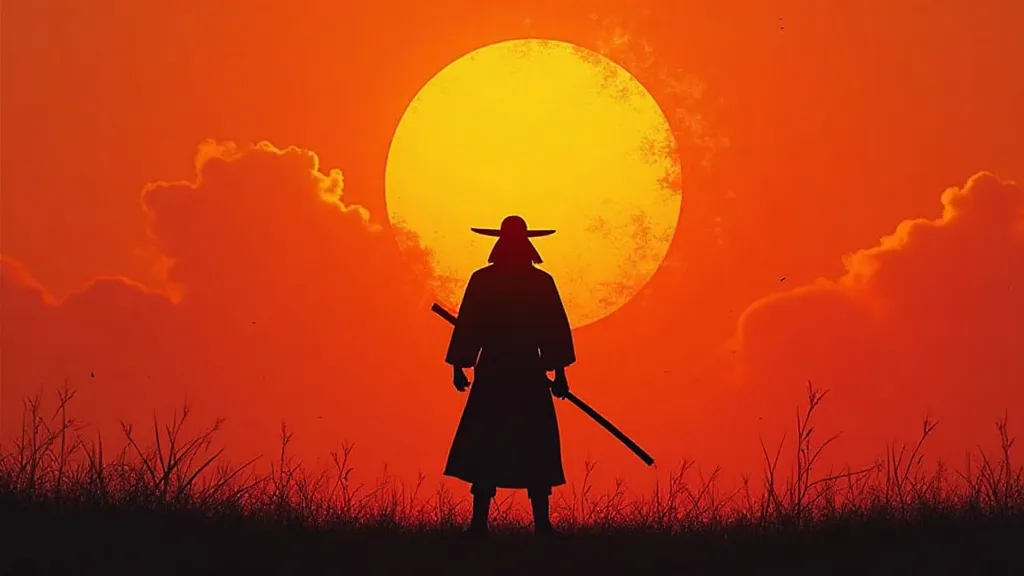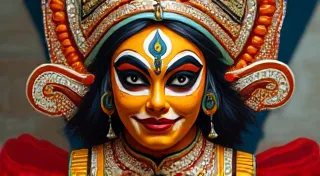Japanese Folklore: Tales of Yokai and Samurai
Japan's cultural heritage is deeply interwoven with a vibrant tapestry of folklore, passed down through generations in oral traditions. These stories aren't mere entertainment; they offer insights into Japanese values, beliefs, and historical perspectives. This article delves into the fascinating world of Japanese folklore, exploring the origins and meanings of Yokai (spirits), tales of brave samurai, and the crucial role storytelling plays within Shinto and Buddhist practices.
The Realm of Yokai: Spirits and Monsters of Japanese Folklore
Yokai are supernatural creatures inhabiting Japanese folklore. They aren't always malicious; some are mischievous, benevolent, or simply enigmatic. Their origins are complex, reflecting a blending of indigenous Shinto beliefs, Buddhist concepts, and influences from Chinese mythology. The term "Yokai" encompasses a wide range of beings, from mischievous spirits inhabiting everyday objects to powerful, monstrous entities.
Consider the Kappa, water spirits often depicted as turtle-like humanoids known for pulling people underwater. Or the Kitsune, fox spirits with the ability to shapeshift and possess incredible magical powers, often serving as messengers of Inari, the god of rice. Each Yokai carries a symbolic weight, often representing anxieties, desires, or explanations for natural phenomena. The role of storytelling in conveying these narratives echoes traditions found in diverse cultures, such as the vital function of Griots in West Africa, who serve as keepers of history and tradition. Their responsibilities extend far beyond simple recitation; they are living libraries, preserving the past for future generations. You can learn more about this fascinating role in our article on West African Griots: Keepers of History and Tradition.

The stories of Yokai served as cautionary tales, explanations for unexplained events, and a way to explore the unknown. They instilled respect for nature and highlighted the importance of moral behavior. These narratives, passed down through generations, are essential to understanding the Japanese worldview, a perspective which has parallels to storytelling traditions around the globe. Think of the elaborate performances and mythical creatures central to storytelling in Kerala, India, where Kathakali blends ancient myths with vibrant artistic expression.
Samurai Tales: Honor, Courage, and the Bushido Code
Alongside the tales of spirits, the stories of samurai—the warrior class of feudal Japan—are a cornerstone of Japanese folklore. These narratives aren’t simply about battles and conquests; they embody the Bushido code, a strict moral code that governed the samurai's behavior. Bushido emphasized qualities like loyalty, courage, honor, justice, and self-discipline.
Stories recount the bravery of warriors facing overwhelming odds, the tragic consequences of betraying one's lord, and the importance of unwavering commitment to duty. The tales of Miyamoto Musashi, a renowned swordsman and philosopher, are particularly compelling. These stories served to inspire and educate aspiring samurai, reinforcing the values essential to their class.
The samurai stories demonstrate that the emphasis was not just on physical prowess but on inner strength and unwavering ethical conduct. They underscore the profound impact of personal honor and the acceptance of death with dignity. The deep connection to the landscape and the powerful myths interwoven with these narratives bear similarities to the folklore found in the Scottish Highlands, where ancient legends and the rugged beauty of the environment combine to create a unique cultural identity. The enduring power of storytelling is universally evident. For those interested in exploring other rich storytelling traditions, you might find our article on Stories from the Scottish Highlands: Myths and Folklore particularly illuminating.

Storytelling in Shinto and Buddhist Traditions
Storytelling played a vital role in both Shinto and Buddhist traditions within Japan. Shinto, the indigenous religion of Japan, relies heavily on oral tradition to convey myths about the kami (spirits or deities). These myths explain the creation of the world, the origins of rituals, and the relationships between humans and the divine.
Buddhist narratives, brought to Japan from China, often use parables and stories to illustrate moral lessons and the path to enlightenment. These tales, frequently intertwined with existing Japanese folklore, blended seamlessly into the cultural landscape. Performances, festivals, and community gatherings provided platforms for these stories to be shared, ensuring their survival and adaptation across generations. The importance of festivals and community gatherings in preserving these narratives highlights a universal aspect of human culture. Similarly, the oral traditions of Patagonia, shaped by the vast landscapes and mythical creatures that inhabit the region, are integral to understanding the local identity.
The cyclical nature of the Japanese calendar, marked by numerous festivals, provided constant opportunities for storytelling, reinforcing cultural values and strengthening community bonds. The ability to recount these narratives was considered a valuable skill, passed down through families and within communities. Maintaining these traditions requires dedication and understanding – qualities shared by storytellers worldwide.

The Enduring Power of Narrative
Japanese folklore isn’ as isolated as one might think. The interconnectedness of narratives across cultures illustrates a common thread of human experience – the desire to understand the world, explain the inexplicable, and pass on wisdom through storytelling. While the specific details may differ – Kappa versus the creatures of Patagonian myth – the underlying purpose remains constant.
The act of storytelling itself is deeply embedded in our human experience. It is a means of connection, a tool for education, and a source of entertainment. From the ancient traditions of Kerala, where Kathakali performances bring myths to life, to the rugged landscapes of Patagonia, where tales of mythical creatures echo through the valleys, storytelling continues to shape our understanding of ourselves and the world around us. The rich oral tradition of Kerala, where intricate performances and captivating stories bring ancient myths to life, offers a compelling example of the enduring power of storytelling. It’s a tradition that, like those of Japan, is carefully preserved and passed down through generations.
Preserving the Legacy
Today, efforts continue to preserve and share these valuable storytelling traditions. From theater productions and animated films to academic research and community events, the legacy of Japanese folklore remains vibrant and relevant. Understanding these stories provides a unique window into the soul of Japan, offering insights into its history, values, and enduring cultural identity. The ongoing commitment to preserving these traditions – ensuring that the stories of Yokai and valiant samurai continue to resonate with future generations – is a testament to their enduring power. The future of folklore hinges on these preservation efforts and the continued appreciation for its profound cultural significance.
More than just entertainment, these tales offer crucial insights into Japanese values and beliefs. The ability to share these stories is a responsibility, a way of ensuring that the cultural heritage of Japan remains vibrant and accessible to all. As we continue to explore the rich tapestry of global folklore, we uncover a shared human experience – the power of stories to connect us, inspire us, and shape our understanding of the world.





